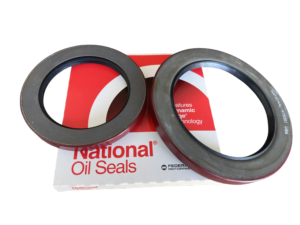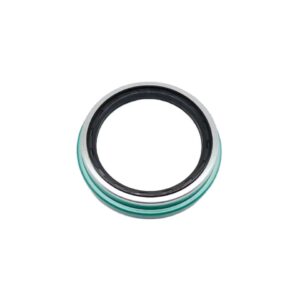Table of Contents
ToggleUltimate Guide to Oil Seals: Applications, Sizes, Popular Models, Costs, and Interchangeability
Oil seals are vital components used across various industries to ensure effective sealing, protect systems from leaks, and maintain optimal operation. From automotive engines to industrial machinery and hydraulic systems, oil seals come in different types, sizes, and materials. This article will explore the applications of oil seals, popular models, and key reference tools like the National Oil Seal Catalog PDF, SKF Oil Seal Cross Reference, oil seal size charts, and more. We’ll also answer common questions regarding seal oil, rear main oil seal replacement, and the role of rubber oil seals in modern machinery.


National Oil Seal Catalog PDF: A Comprehensive Resource for Selection
The National Oil Seal Catalog PDF is an essential resource for engineers and maintenance professionals. It contains detailed information on the full range of oil seals, including technical specifications, part numbers, and applications. This catalog helps users quickly identify the right oil seals for specific machinery or vehicles, based on dimensions, materials, and design features.
Key Features of the Catalog:
- Detailed Specifications: Includes information on seal material, design, and dimensions.
- Applications: Lists the specific machines, engines, and vehicles each oil seal is suited for.
- Part Numbers: Provides part numbers for easier identification and ordering.
National Oil Seal Interchange: Finding Compatible Replacements
The National Oil Seal Interchange is a valuable tool that helps users find equivalent seals from different manufacturers. When replacing a National Oil Seal, an interchange guide can ensure that you select a compatible seal from another brand without compromising performance. These guides are particularly helpful when specific National models are no longer available or when dealing with obsolete parts.
Popular Interchange Tools:
- National to SKF Interchange: If a National oil seal is unavailable, a cross-reference guide helps find the closest equivalent from SKF or other manufacturers.
- Timken Interchange: Allows for quick identification of Timken replacements for National seals.
Oil Seal by Dimension: Choosing the Right Seal Based on Size
One of the most critical factors when selecting an oil seal is its dimensions. Oil seals are available in a wide range of sizes, and choosing the right one ensures a proper fit and effective sealing. Oil seal dimensions typically consist of three key measurements: the inner diameter (ID), outer diameter (OD), and thickness (T).
Example Sizes:
- 50x70x10: A common size for crankshaft oil seals.
- 40x60x12: Frequently used for axle shaft seals in automotive applications.
- 55x75x10: Often found in heavy-duty machinery.
Oil Seal Size Charts: Manufacturers like National and SKF provide detailed oil seal size charts that list standard sizes for various applications. These charts are a great resource when determining which seal to choose based on the specific dimensions required.
Oil Seal Gasket: Dual Protection for Sealing Systems
An oil seal gasket is another essential component often used in conjunction with oil seals. Gaskets provide a secondary seal between two mating surfaces, ensuring a leak-proof connection in a variety of machinery and engines. While oil seals are designed to prevent fluid leakage, gaskets further improve the sealing integrity, especially when dealing with high-pressure systems.
Common Applications:
- Engine Sealing: Oil seal gaskets are used in engine blocks, timing covers, and valve covers.
- Hydraulic Systems: Gaskets combined with oil seals prevent leakage in hydraulic pumps and cylinders.
Material Options: Oil seal gaskets can be made from rubber, silicone, or metal, depending on the sealing requirements and temperature conditions.
Rear Main Oil Seal Replacement: Key Considerations
The rear main oil seal is one of the most critical seals in an engine. Located at the back of the crankshaft, it prevents engine oil from leaking out of the rear of the engine. A rear main oil seal replacement is typically required when there is a significant oil leak or when the seal becomes damaged due to age or wear.
Replacement Costs:
- Part Cost: Rear main oil seals typically range from $15 to $50 depending on the vehicle make and model.
- Labor Costs: Replacing a rear main oil seal can be labor-intensive and may cost $300 to $800 depending on the engine type and labor rates.
Popular Models:
- National 471742: A commonly used rear main seal in many automotive applications.
- SKF 24186: Known for high-quality rear main sealing in automotive and industrial applications.
Ring Seal Oil Additive: Enhancing Seal Durability
Ring seal oil additives are products designed to improve the performance and longevity of oil seals. These additives reduce friction, prevent wear, and increase the sealing effectiveness in engines, transmissions, and hydraulic systems. They are often added to engine oil or hydraulic fluid to improve the overall sealing capability.
Benefits of Ring Seal Oil Additives:
- Extended Seal Life: Reduces wear and tear on seals, extending their functional lifespan.
- Improved Lubrication: Enhances the oil’s ability to lubricate seals, preventing friction-related damage.
- Leak Prevention: Helps to prevent leaks by improving the seal’s contact with sealing surfaces.
Rubber Oil Seal: The Most Common Type of Oil Seal
Rubber oil seals are among the most common and widely used oil seals. These seals are made from high-quality rubber compounds that offer excellent resistance to oil, heat, and wear. Rubber seals are often used in automotive, industrial, and hydraulic systems.
Popular Types of Rubber Oil Seals:
- Nitrile Rubber (NBR): Offers good resistance to petroleum oils and hydraulic fluids. Used in a wide range of automotive and industrial applications.
- Fluoroelastomer (FKM): Provides excellent resistance to high temperatures and aggressive chemicals, making it ideal for high-performance automotive and aerospace applications.
Rubber Oil Seal Sizes:
- 35x47x10: Used in automotive applications such as engine timing covers.
- 40x60x8: Commonly used in axle shafts and other rotating machinery.
Rubber Oil Seal Cost: Rubber oil seals are affordable, typically ranging from $1 to $5 per unit depending on the size and material.
Seal Oil Alaska: Special Considerations for Extreme Conditions
Seal oil in Alaska and other cold climates requires seals that can perform in extreme temperatures without hardening or losing sealing capability. In harsh environments, especially where temperatures drop below freezing, oil seals must be resistant to stiffening and cracking.
Key Considerations:
- Cold-Resistant Materials: Seals made from rubber compounds like EPDM (Ethylene Propylene Diene Monomer) are ideal for extremely cold environments.
- Seal Design: Oil seals in such regions need to be designed for low temperatures to avoid performance degradation.
- Applications: Used in automotive engines, industrial equipment, and hydraulic systems operating in frigid conditions.
Seal Valve Stem Oil: Preventing Oil Leaks in Engine Valves
The seal valve stem oil is used in automotive and motorcycle engines to prevent oil from leaking past the valve stem and into the combustion chamber. This seal ensures that oil is properly circulated within the engine and prevents excess oil from entering the combustion chamber, which could cause smoking and other issues.
Common Applications:
- Automotive Engines: Prevents excessive oil consumption and reduces engine emissions.
- Motorcycles: Maintains proper lubrication and reduces oil consumption.
Popular Models:
- National 472117: A commonly used valve stem oil seal for many car models.
- SKF 22873: Ideal for motorcycle engines, providing excellent sealing in valve systems.
SKF Oil Seal Cross Reference by Part Number: Ensuring Compatibility
The SKF oil seal cross-reference by part number is an invaluable tool for anyone needing to replace or match oil seals from different manufacturers. SKF provides a comprehensive guide that allows you to find equivalent oil seals based on part numbers from other brands, ensuring compatibility and seamless replacement.
Benefits of Using a Cross Reference:
- Quick Identification: Helps identify the right SKF seal when the original part is no longer available.
- Time-Saving: Provides an easy-to-use reference, reducing the time needed to find compatible oil seals.
- Compatibility: Ensures the replacement oil seal performs the same as the original.
SKF Oil Seal Size Chart: A Handy Guide for Seal Sizing
The SKF oil seal size chart is a useful resource for determining the correct dimensions of oil seals. The chart provides standard measurements for various types of seals, helping you choose the correct seal for your application. The chart includes sizes for seals used in automotive, industrial, and hydraulic systems, making it a valuable tool for both professionals and DIYers.
Example Sizes:
- 35x55x10: A common seal size for automotive applications.
- 40x60x12: Often used in hydraulic cylinders and pumps.
- 50x70x8: Popular for automotive and light truck applications.
Conclusion: Meeting Diverse Seal Needs Across Industries
Oil seals are crucial for ensuring the longevity and performance of machinery and engines. Whether you’re dealing with a rear main oil seal replacement, selecting a rubber oil seal, or needing a SKF oil seal cross-reference, understanding your options and choosing the right seal for the job is essential. With resources like the National Oil Seal Catalog, oil seal size charts, and interchange guides, finding the perfect oil seal has never been easier. Keep these considerations in mind to ensure proper sealing and smooth operation across all your applications.



Leave A Comment